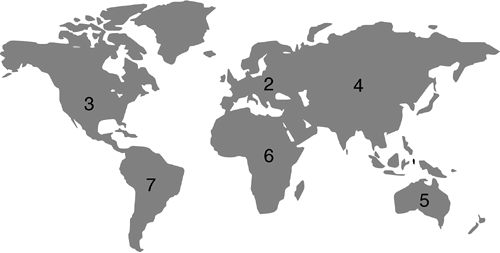I’ve recently been writing a lot about SS7 / Sigtran, and couldn’t fit this in anywhere, but figured it may be of use to someone…
In our 3-8-3 formated ITU International Point code, each of the parts have a unique meaning.
The 3 bits in the first section are called the Zone section. Being only 3 bits long it means we can only encode the numbers 0-7 on them, but ITU have broken the planet up into different “zones”, so the first part of our ITU International Point Code denotes which Zone the Point Code is in (as allocated by ITU).
The next 8 bits in the second section (Area section) are used to define the “Signaling Area Network Code” (SANC), which denotes which country a point code is located in. Values can range from 0-255 and many countries span multiple SANC zones, for example the USA has 58 SANC Zones.
Lastly we have the last 3 bits that make up the ID section, denoting a single unique point code, typically a carrier’s international gateway. It’s unique within a Zone & SANC, so combined with the Zone-SANC-ID makes it a unique address on the SS7 network. Being only 3 bits long means that we’ve only got 8 possible values, hence so many SANCs being used.
| 2 | Europe |
| 3 | Greenland, North America, the Caribbean, and Mexico |
| 4 | Middle East and Asia |
| 5 | South Asia, Australia, and New Zealand |
| 6 | Africa |
| 7 | South America |

